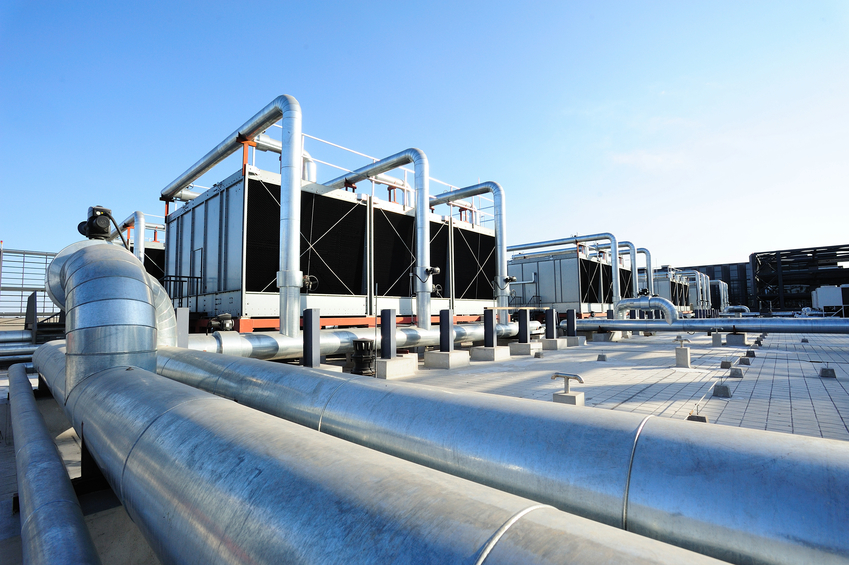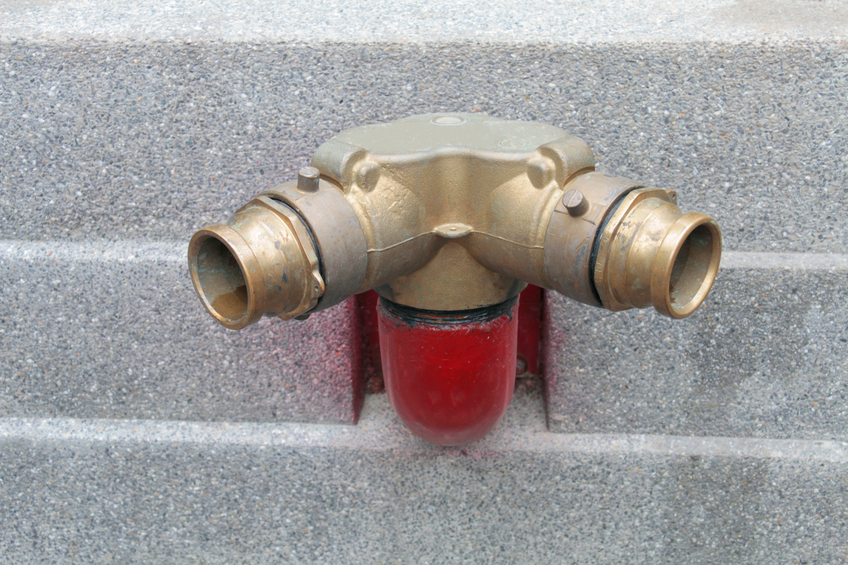Pennsylvania Mechanical and Ethics 24 PDH Discount Package 3
Courses in this Package
Basic Machines Part 2 (M03-036)
Diesel Engine Fundamentals (M04-002)
Fire Service Features of Buildings and Fire Protection Systems (M12-002)
Liquid Process Piping, Part 1: General Piping Design (M03-023)
Determining Negligence in Engineering Failures (LE2-012)

This online engineering PDH course discusses the relationship between Work and Power and their different their applications. It also describes the relationship between Force-Pressure and their different applications. Furthermore, this course explains the basics of hydrostatic and hydraulic liquids and highlights their respective machines. The last chapter of this course illustrates the basic machine elements, identifies their respective machine functions and introduces the basics of clutches.
A machine is any device that helps you to do work. It may help by changing the amount of force or the speed of action. Machines may also be used to change the direction of a force or in other cases transform energy; for example, a generator transforms mechanical energy into electrical energy.
This 3 PDH online course is applicable to engineers, designers, manufacturers and anyone interested to gain an understanding of basic machine operations.
This PE continuing education course is intended to provide you with the following specific knowledge and skills:
- Understanding the relationship between Work and Power and their different applications
- Learning how to determine horsepower ratings
- Understanding the difference between Force and Pressure and their applications in basic machines
- Familiarizing with the different force and pressure measuring devices
- Understanding the difference between hydrostatic and hydraulic liquids and their applications in basic machines
- Understanding the basic machine elements and identifying their respective functions
- Learning about clutch basics
In this professional engineering CEU course, you need to review Chapters 7 through 11, of the Naval Education and Training Professional Development and Technology Center "Basic Machines" NAVEDTRA 14037 - training course.
Once you complete your course review, you need to take a multiple-choice quiz consisting of twenty (20) questions to earn 3 PDH credits. The quiz will be based on this NAVEDTRA publication.
Upon successful completion of the quiz, print your Certificate of Completion instantly. (Note: if you are paying by check or money order, you will be able to print it after we receive your payment.) For your convenience, we will also email it to you. Please note that you can log in to your account at any time to access and print your Certificate of Completion.

This online engineering PDH course provides guidance on the basic operating principles of 2-cycle and 4-cycle diesel engines. It explains the fundamentals and theory of operation of engine governors, fuel ejectors, camshafts as well as typical engine protective features.
Today most facilities require some type of prime mover to supply mechanical power for pumping, electrical power generation, operation of heavy equipment, and to act as a backup electrical generator for emergency use during the loss of the normal power source. Although several types of prime movers are available (such as gasoline engines, steam and gas turbines), the diesel engine is the most commonly used. Diesel engines provide a self-reliant energy source that is available in sizes from a few horsepower to 10,000 hp. Relatively speaking, diesel engines are small, inexpensive, powerful, fuel efficient, and extremely reliable if maintained properly.
This 4 PDH online course is applicable to mechanical engineers, plant operators, maintenance personnel, and technical staff who are interested in gaining a better understanding of diesel engine fundamentals.
This PE continuing education course is intended to provide you with the following specific knowledge and skills:
- Learning the different types of diesel engines
- Learning the major components and support systems of a diesel engine
- Understanding the basic diesel cycles (two-stroke and four-stroke)
- Understanding the operation of diesel engine speed and fuel controls
- Understanding the maintenance and protection methods of diesel engines
In this professional engineering CEU course, you need to review Module 1, "Diesel Engine Fundamentals" of the Department of Energy Publication DOE-HDBK-1018/1-93, "Mechanical Science".
Upon successful completion of the quiz, print your Certificate of Completion instantly. (Note: if you are paying by check or money order, you will be able to print it after we receive your payment.) For your convenience, we will also email it to you. Please note that you can log in to your account at any time to access and print your Certificate of Completion.

This online engineering PDH course provides information in accordance with OSHA standards about how firefighters typically interact with building features and fire protection systems during fires and similar emergencies.
This course focuses on ways that designers, code officials, and related stakeholders can contribute to the efficiency of operations during emergency incidents in both new and existing buildings. The material is applicable to all types of fire service organizations, including fire brigades and fire departments. The concepts discussed in this course will apply to most facilities but do not cover every possible type of building, facility, or hazard. Therefore, this document is intended to supplement rather than substitute codes and standards.
This 12 PDH online course is intended for engineers, design and construction personnel, code officials, and any other stakeholders who are involved in the fire safety aspect of a building.
This PE continuing education course is intended to provide you with the following specific knowledge and skills:
- Familiarization with OSHA’s overview on fire service features and fire protection systems of buildings
- Understanding the basis of fire apparatus access, water supply, premises identification, firefighter access, sprinkler systems, standpipe systems, fire department connections, alarm and communication systems, and other ancillary systems
- Learning about the timescale of fire services with respect to the building phases
- Familiarization with workers’ rights as well as OSHA’s and NIOSH’s support programs
In this professional engineering CEU course, you need to review OSHA 3256-09R 2015 titled "Fire Service Features of Buildings and Fire Protection Systems" by the U.S. Department of Labor.
Upon successful completion of the quiz, print your Certificate of Completion instantly. (Note: if you are paying by check or money order, you will be able to print it after we receive your payment.) For your convenience, we will also email it to you. Please note that you can log in to your account at any time to access and print your Certificate of Completion.

This online engineering PDH course presents general piping design calculations and requirements for all piping systems regardless of construction material. Most of these calculations and requirements are provided and regulated by the ASME B31.3 code, respectively.
The liquid process piping manual provides information for the design of liquid process piping systems including all pipe and appurtenances which are used to convey liquids to, from and between pumping, storage and treatment units but which are not integral to any unit.
This 3 PDH online course is applicable to engineers, designers, contractors, building professionals, maintenance personnel, and manufacturers who are interested in gaining a better understanding of general piping design of liquid process piping.
This PE continuing education course is intended to provide you with the following specific knowledge and skills:
- Understanding the properties of construction materials
- Understanding the characteristics of the design pressure
- Learning how to size piping systems
- Understanding the stress analysis of piping systems
- Familiarizing with pipe components such as flanges, gaskets and bolting
- Understanding how pipe components affect the piping design
- Understanding how to properly identify piping
- Understanding the basics of piping supports
- Familiarizing with the different testing and flushing methods for piping systems
In this professional engineering CEU course, you need to review Chapter 3, "General Piping Design" of the "Liquid Process Piping" engineering manual, published by the United States Army of Corps of Engineers (USACE), Publication Number EM 1110-1-4008.
Once you complete your course review, you need to take a multiple-choice quiz consisting of twenty (20) questions to earn 3 PDH credits. The quiz will be based on Chapter 3 of this USACE publication.
Upon successful completion of the quiz, print your Certificate of Completion instantly. (Note: if you are paying by check or money order, you will be able to print it after we receive your payment.) For your convenience, we will also email it to you. Please note that you can log in to your account at any time to access and print your Certificate of Completion.

This engineering online PDH course will establish conditions under which, when an engineering failure has occurred, it can be attributed to negligence.
Five causes of failure are proposed: negligence, rare failure mode, overlooked failure mode, new (previously unrecognized) failure mode, and incorrect assessment of a known risk. Negligence is the only cause that involves failing in an ethical duty. These concepts are illustrated with five case studies of failures ranging from gross negligence to absolutely unforeseeable events: 1) the Great Boston Molasses Flood of 1919, for which a new possible cause was identified 95 years later (2014); 2) a building collapse in Bangladesh in which over 1,000 people died—one of the worst structural engineering disasters in history; 3) a meteorite strike of a private residence; 4) the crash of the British-French Concorde supersonic airliner, caused by an unlikely tire blow-out; and 5) radiation overdoses received by patients treated by the Thorac-25 medical linear accelerator, caused by errors in the software controlling the machine.
The 2 PDH online course is intended for engineers concerned with ethical behavior in engineering practice.
This PE continuing education course is intended to provide you with the following specific knowledge and skills:
- Understanding the definitions of negligence and standard of care
- Relating safety to risk
- Knowing the principle of Knightian uncertainty
- Avoiding the retrospective fallacy in accident investigations
- Avoiding the fallacy, in accident investigations, of assuming perfect engineering practice
- Using the results of failure investigations appropriately
- Being aware of the negative effects of punishment on learning from accidents
- Categorizing the general causes of engineering failures
Upon successful completion of the quiz, print your Certificate of Completion instantly. (Note: if you are paying by check or money order, you will be able to print it after we receive your payment.) For your convenience, we will also email it to you. Please note that you can log in to your account at any time to access and print your Certificate of Completion.